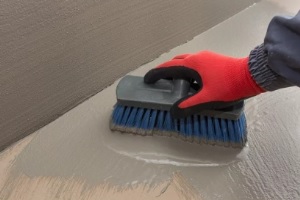 Protecting your commercial building should be among your top priorities as a building owner or business manager in charge of maintenance decisions. Your structure is the safe haven from which business can be conducted.
Protecting your commercial building should be among your top priorities as a building owner or business manager in charge of maintenance decisions. Your structure is the safe haven from which business can be conducted.
When the building is no longer functioning properly, operations can be interrupted or even halted, cutting the company’s bottom line. Commercial waterproofing is one strategy to increase the lifespan of a structure and protect it from damage. Still, many building owners consider only the visible part of the structure when it comes to this protection.
Here is an overview of how below-grade waterproofing helps commercial buildings and why it’s best not to overlook it as an option.
What Does Below-Grade Waterproofing Mean?
Much of the waterproofing done to a structure occurs on the visible areas: exterior walls, pipe entry or exit points, and so on. However, underneath the ground’s surface, the building’s support structures continue for many feet—sometimes in excess of 100 feet in the case of large structures or those on unstable soil.
This area is especially vulnerable to water because it rests within the soil, where moisture is collected. Below-grade waterproofing accesses this submerged area to provide waterproofing services to the materials you cannot see or easily reach at a later time.
Why Below-Grade Waterproof Your Commercial Building
There are many reasons to waterproof your commercial building below grade, from protecting against damage to increasing property values over the long term should you choose to sell. However, four of the most notable advantages of below-grade waterproofing for commercial buildings are:
1. Greatest Increase to Longevity
When water penetrates the gaps, cracks, or textured surfaces of a building’s external materials, it can expand and contract, creating larger openings that eventually degrade the structural stability of the building. Below-grade waterproofing halts this process so the moisture cannot infiltrate.
As a result, your structure will last longer because it will not fall victim to the common repair needs that non-waterproofed buildings do. This ensures that your structure’s lifespan stretches as far as is reasonable, which can be 100 years or more for well-made brick or stone buildings.
Less time spent repairing your building means more time dedicated to working, storing products, or inviting customers to learn about services.
2. Avoids Difficult and Costly Repairs Later
Part of increasing longevity in your structure is avoiding difficult, costly repairs associated with water damage. From the cracks mentioned above that could leave your structure on unstable ground to burgeoning mold that makes your employees feel sick and rots away the wooden supports of your building, many water-related issues come at great expense for remediation.
This is especially true with foundation issues, which require extensive work to ensure your structure is still safe to occupy. Below-grade waterproofing avoids damage to some of the most sensitive areas of your building.
3. Expands Your Options
Those still in the building phase of owning a commercial structure can conduct below-grade waterproofing while the foundation is being set. This expands options for waterproofing, some of which are only available while this area of the building is accessible.
However, if you are approaching waterproofing on a building that has already completed construction, you are not too late. Experts can still access the subgrade areas to conduct waterproofing, broadening your maintenance horizons and offering numerous choices, such as membrane coverage specific to that area.
4. Provides the Most Comprehensive Coverage
 A building is only as resilient as its least protected element. If you have gone through the effort of waterproofing the visible parts of your structure, it could still be susceptible to damage below the grade, and you may still be combatting cracks, mold, and more.
A building is only as resilient as its least protected element. If you have gone through the effort of waterproofing the visible parts of your structure, it could still be susceptible to damage below the grade, and you may still be combatting cracks, mold, and more.
Below-grade waterproofing is an essential step in comprehensive protection for a structure since the soil around the foundation may retain water and hold it directly up against the exterior of your building for extended periods. If you are investing in the longevity of your building, do not neglect the parts you cannot see because they can become a problem later without proper treatment.
Get Superior Commercial Below-Grade Waterproofing from the Pros
Whether you are approaching commercial waterproofing during the building stages or years later, options are available to waterproof below-grade for your structure.
The experts at Waterproof Caulking & Restoration can help you explore the available methods and determine which are suitable for your building’s needs based on its unique risks, soil composition, climate, and more. Contact Waterproof Caulking & Restoration to schedule an appointment to begin the process of below-grade waterproofing for your commercial building.
